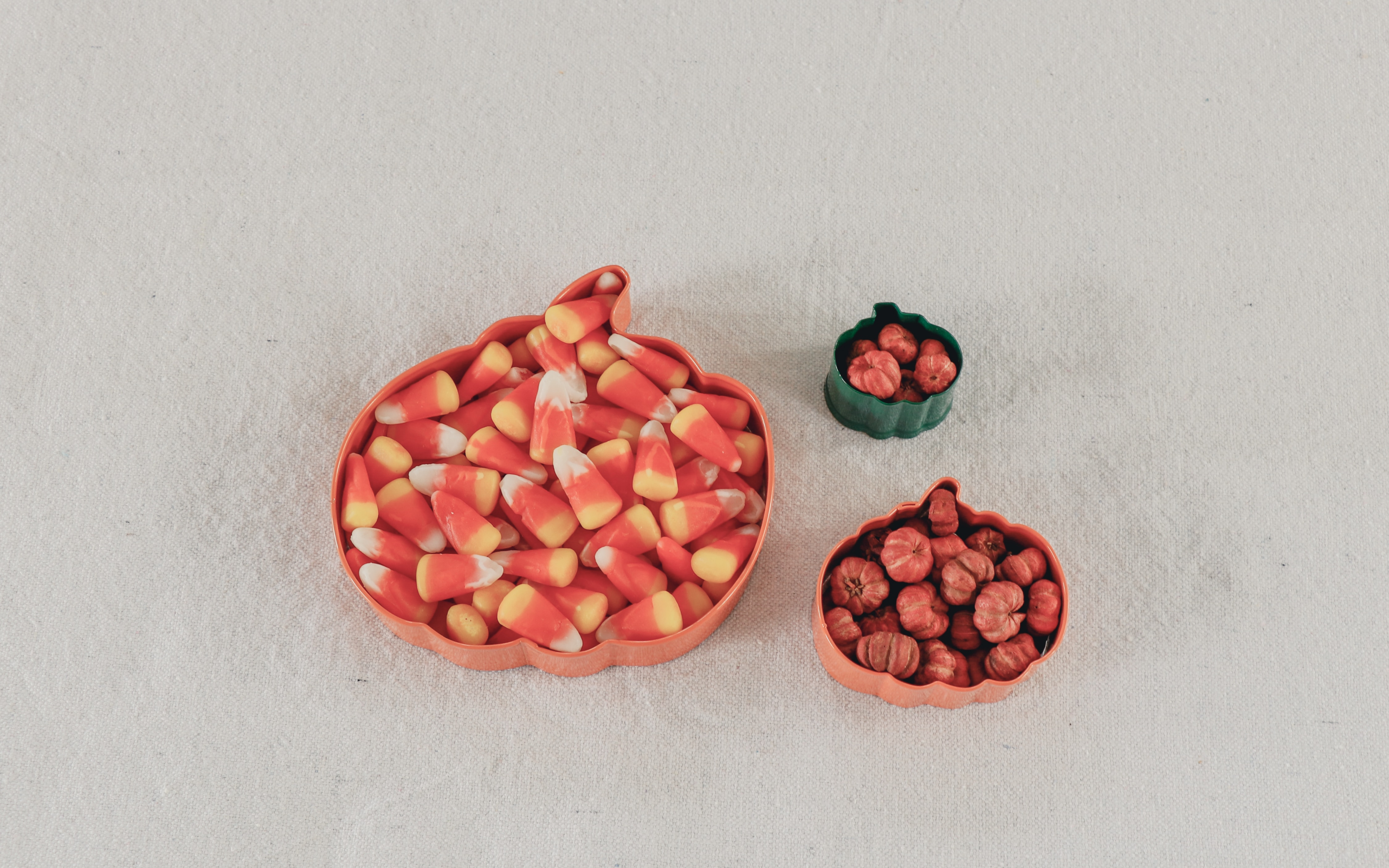
Halloween Candy: The Sweet Story Behind Trick-or-Treating
posted on 20th of March by admin
Halloween Candy: The Sweet Story Behind Trick-or-Treating
Halloween, the spooky and thrilling holiday celebrated on October 31st, has become synonymous with costumes, haunted houses, and of course, candy. Trick-or-treating, a cherished tradition of Halloween, involves children dressing up in costumes and going door-to-door to collect sweets. While it may seem like a simple and fun activity, the history of Halloween candy and trick-or-treating is a fascinating tale that spans centuries and cultures. In this blog post, we will delve into the sweet story behind trick-or-treating, exploring its origins, evolution, and the role candy plays in this beloved holiday.
The Origins of Halloween
To understand the roots of trick-or-treating, we must first look at the origins of Halloween itself. Halloween can trace its beginnings to ancient Celtic festivals, particularly Samhain. Samhain, which means "summer's end," marked the end of the harvest season and the beginning of winter in the Celtic calendar. It was believed that on the night of October 31st, the boundary between the living and the dead blurred, allowing spirits to roam the earth.
To ward off these malevolent spirits, the Celts would light bonfires and wear costumes made of animal heads and skins. They also left food offerings to appease these spirits. This ancient practice of leaving out food for the departed souls bears a striking resemblance to modern-day trick-or-treating.
The Christian Influence
As Christianity spread across Europe, it incorporated and transformed many pagan traditions, and Halloween was no exception. In the 8th century, Pope Gregory III designated November 1st as All Saints' Day, a day to honor all saints and martyrs. The evening before, October 31st, came to be known as All Hallows' Eve, eventually shortened to Halloween.
During the medieval period, a Christian tradition called "souling" emerged. On All Hallows' Eve, the poor would go door-to-door, asking for "soul cakes" in exchange for prayers for the homeowners' deceased relatives. This custom bears a resemblance to the practice of trick-or-treating, where children visit houses to receive candy.
The American Influence
Halloween as we know it today started to take shape in North America during the 19th century. Irish and Scottish immigrants brought their Halloween traditions with them, including the practice of dressing up in costumes and going house-to-house asking for food and money.
However, it wasn't until the early 20th century that Halloween became a widely celebrated holiday in the United States. At this time, the holiday began to shift away from its religious and superstitious roots towards a more community-centered event.
The Birth of Trick-or-Treating
The term "trick-or-treating" itself is believed to have originated in the United States in the early 20th century. It was first used in print in 1927, and by the 1930s, the practice had become widespread. During the Great Depression, trick-or-treating provided a much-needed diversion from the economic hardships of the time. Children going door-to-door in costumes and receiving small treats was a way to boost community morale.
The phrase "trick-or-treat" implies a playful threat - give us treats, or we'll play tricks on you. While pranks and mischief were initially a part of the tradition, they began to decline as communities organized and encouraged safer Halloween activities. Candy and other treats became the primary focus of the tradition.
The Role of Candy
Candy has been a central element of Halloween since the early days of trick-or-treating. In the past, children would receive a variety of treats, including homemade cookies, fruit, nuts, and coins. However, candy gradually emerged as the preferred treat due to its convenience and popularity among children.
The introduction of individually wrapped candies, such as candy corn and small chocolate bars, made it easier to distribute treats to trick-or-treaters. Candy companies began to capitalize on the Halloween market, producing special seasonal candies and packaging. Over time, Halloween candy became synonymous with colorful and delicious confections.
The Candy Industry's Influence
The candy industry played a significant role in shaping the way we celebrate Halloween today. It recognized the potential of Halloween as a lucrative holiday and began marketing its products specifically for the occasion. In the 1950s and 1960s, trick-or-treating gained immense popularity, and candy manufacturers seized the opportunity to promote their products through advertising campaigns.
One of the most iconic Halloween candies, candy corn, was created by George Renninger of the Wunderle Candy Company in the late 19th century. This tri-colored, kernel-shaped candy quickly became a staple of Halloween celebrations and is still enjoyed by many today.
Modern Halloween Candy
Today, Halloween candy is big business. It is estimated that Americans spend billions of dollars on Halloween-related products each year, with a significant portion going towards candy purchases. Candy aisles in stores are stocked with an array of spooky and themed treats, from miniature chocolate bars to gummy worms shaped like insects.
The tradition of trick-or-treating remains a beloved activity for children and adults alike. Costumes have become increasingly elaborate, and neighborhoods often compete to have the most creatively decorated houses and the best treats. For many, Halloween has become a time to indulge in sweet treats and share the joy of candy with friends and family.
Halloween Candy Around the World
While the United States is known for its Halloween candy traditions, the holiday's celebration and candy consumption are not limited to North America. In recent years, Halloween has gained popularity in many other parts of the world, and with it, the exchange of sweets.
In Mexico, for example, Halloween is often celebrated alongside the traditional Dia de los Muertos (Day of the Dead) festivities. Sugar skulls and other sweet treats are an integral part of this celebration, symbolizing the remembrance of loved ones who have passed away.
In the United Kingdom and Ireland, children traditionally go "guising" on Halloween, where they dress up and go door-to-door for coins, apples, and nuts. However, the American-style trick-or-treating with candy has also become more common in these countries.
The Evolution of Halloween Candy
As Halloween continues to evolve, so does the variety of candy available during the season. In addition to the classic offerings like candy corn and chocolate bars, there are now countless novelty candies and themed treats. From gummy body parts to ghost-shaped marshmallows, the creativity of candy makers knows no bounds.
Health-conscious parents and individuals have also influenced the Halloween candy landscape. Many companies now offer healthier alternatives, such as fruit snacks and organic candies, to accommodate a wider range of dietary preferences. This shift reflects a growing awareness of the importance of balanced nutrition, even during the festive season.
Conclusion
Halloween candy and trick-or-treating have a rich and varied history, stemming from ancient Celtic rituals and evolving through Christian traditions and immigrant influences. What began as a way to ward off evil spirits has transformed into a beloved holiday celebrated with costumes, decorations, and, of course, sweet treats.
The candy industry has played a pivotal role in shaping the way we celebrate Halloween, with candy becoming the centerpiece of the holiday. From candy corn to miniature chocolate bars, Halloween candy has evolved to include a wide range of treats that cater to every palate.
As Halloween continues to spread its influence around the world, the tradition of trick-or-treating and the love of Halloween candy are likely to endure. It's a
time for communities to come together, for children to embrace their creativity through costumes, and for everyone to indulge in the simple joy of sharing delicious treats. So, when you hand out candy to eager trick-or-treaters this Halloween, remember that you're participating in a tradition with roots that stretch back centuries, and you're helping to create sweet memories that will last a lifetime. Happy Halloween!

Comments